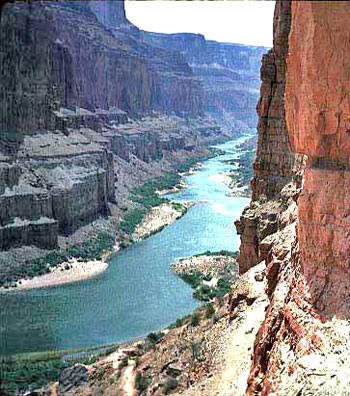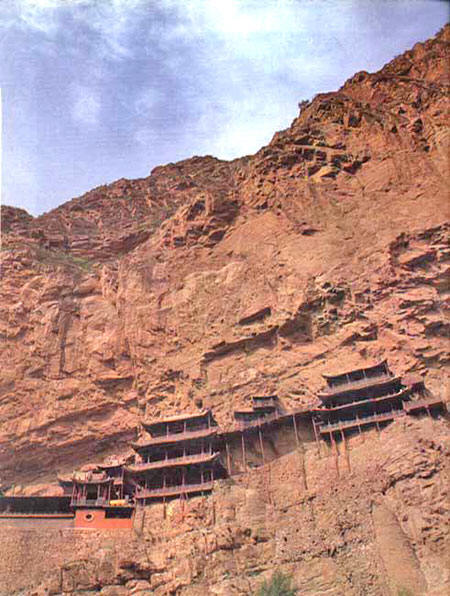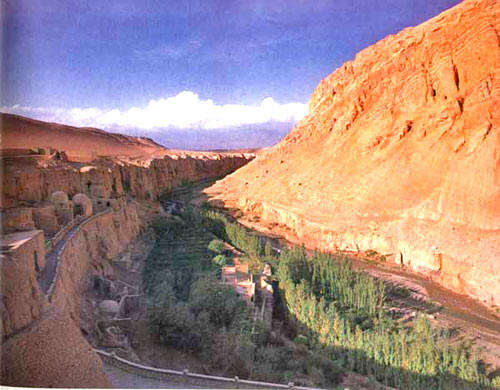|

by Jack Andrews
from
LostCivilizations Website
Spanish version
"According to the story related to the
Gazette by Mr. Kinkaid, the archaeologists of the
Smithsonian Institute, which is financing the expeditions, have
made discoveries which almost conclusively prove that the race which
inhabited this mysterious cavern, hewn in solid rock by human hands,
was of oriental origin..."
- Arizona Gazette April 5, 1909
"First, I would impress that the cavern is nearly inaccessible. The
entrance is 1,486 feet down the sheer canyon wall"
- G. E. Kincaid
1909

Marble Canyon, Grand
Canyon National Park Arizona
Was the carved "installation" in the Grand
Canyon an ancient Buddhist temple?
As you can see in the photos
below, ancient Chinese Buddhist monks went out of there way to carve
temples in just such cliff faces in remote and inaccessible cliff lined
river canyons.
There are other clues to the speculation that the
installation may have been used for such a purpose. Broken swords and
cups and other items often used in ceremonially in ancient Chinese
Buddhist temples, were found in the cave in 1909.
Also, the cave
lies in Marble Canyon (see above photo) which is a steep
limestone (and other rock) wall lined canyon. If you have been to Marble
canyon you will see the similarity to the picture below.

"The Hanging or 'Mid-Air' temples on
Mt. Hengshan - China, to the southeast of Datong -
in the Shanxi province - cling precariously to the cliff face and
illustrate determined isolation of the early Buddhist communities in
China.
Founded in pre-Tang Northern Wei dynasty, the
temples continued to function during the Tang and were
subsequently restored in the Ming and Qing
dynasties".
- "Tang China" by Edmund Capon and Werner
Forman, MacDonald and Co. 1989

"Approximately 70 km. (45 miles) east of
Turfan lie the Buddhist temples of Bezeklik,
most of which were originally built in the open and joined by wooden
porches.
Others were carved into the living rock in the manner of cave
temples. The height of activity at Bezeklik, on the
evidence of surviving wall paintings, was the Tang dynasty
when the Silk Road trade brought travelers, merchants and
missionaries to the temples in search of sanctuary and spiritual
comfort.
Today they are still difficult to reach, for the monks
endeavored, even here in the desert wastelands of Chinese Central Asia,
to build their temples as far away as possible from the real and profane
world."
- "Tang China" by Edmund Capon and Werner
Forman, MacDonald and Co. 1989

The Mai-Chi Caves
Chinling Range, China
From "Magnificant China" Hong Kong Hua Hsia Publications 1972
|




